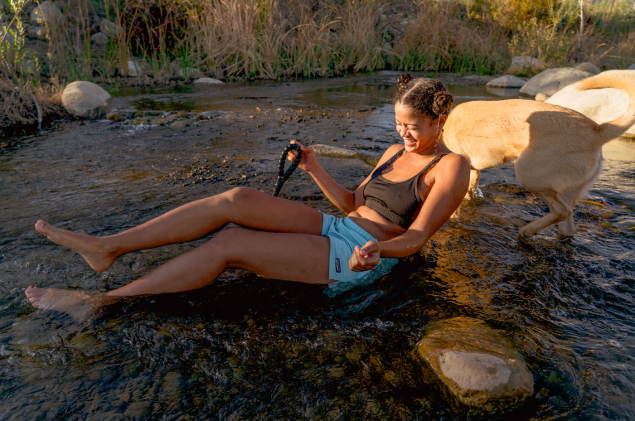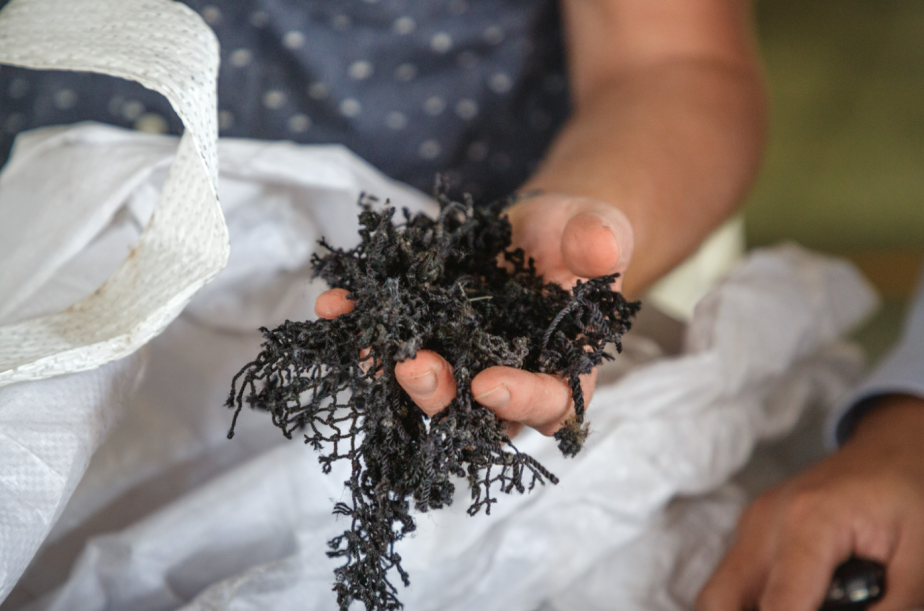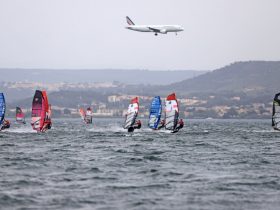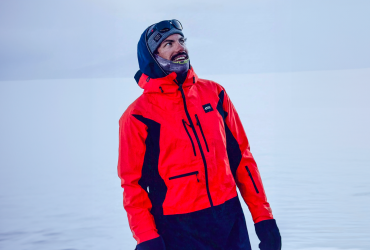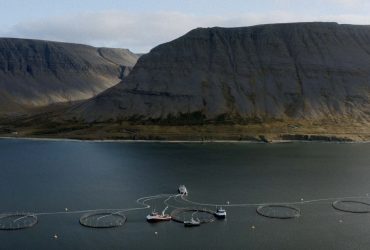Based in California, Bureo transforms used fishing nets into raw material. Recycled into NetPlus®, this 100% traceable post-consumer material is used by Patagonia in its clothing. The creators of Bureo tell us here how they prevent a part of the 600,000 tons of used fishing nets each year from ending up in the marine environment.
In one of our last articles, we talked about how Patagonia used NetPlus recycled nylon produced by Bureo. Made from unusable fishing nets recovered from fishing communities in South America, this recycled nylon represents a responsible alternative to virgin plastics. These plastics are still essential to the manufacture of durable, high-performance clothing. But to produce materials like polyester, the garment industry requires huge amounts of fossil fuels.
In the film "The Monster In Our Closet" (unveiled below in its entirety), we discover through the eyes of lawyer Maxine Bédat (a reference in the field of eco-responsible fashion), environmental journalist Kendra Pierre-Louis and Patagonia designer Pasha Whitmire, the dangerous links between the clothing industry and the oil and gas industry. Beyond the facts, this production highlights what we can all do on an individual, business and governmental level.
With the used fishing nets it collects in South America, the Bureo company also contributes to these essential changes that our planet needs. Its action prevents hundreds of tons of discarded nets from ending up in the ocean each year. A system that also allows Bureo to provide additional income to coastal communities. To learn more, we met with Bureo's creators, Kevin Ahearn and David Stover.
Kevin and David, can you briefly introduce yourselves and explain how you came up with the idea for Bureo?
Kevin Ahearn: I'm Kevin Ahearn, and I'm one of the co-founders of Bureo. I grew up in a little town called East Hampton or Montauk, on the tip of Long Island. So I lived very close to the ocean from a very young age. My father was a surfer, and he helped start the local chapter of the Surfrider Foundation, a non-profit organization that works to preserve the oceans. He taught me early on that it was important to protect the places we love.
The three of us, the founders, studied mechanical engineering at university. Our paths diverged when we entered the job market. We ended up in Australia by chance. David had moved there, and I was traveling there with my brother. We were all traveling around the world to surf, and we saw plastic pollution everywhere we went. So it was through our shared passion for the ocean that we found each other.
David Stover: Kevin and I went to the same engineering school and I grew up in the northwestern United States as well. I left at 18 to live in California, Australia and Chile. I moved here to Ventura County about five years ago after working my way up.
As part of Bureo, all three of us are involved in the recycling program. In terms of business development, Kevin and I work with the partners to integrate materials. We identify the product categories they are interested in and then plan the materials. We all move forward together on most projects and then divide the tasks with Ben working on the sustainability side, Kevin in Engineering, and me in Finance.
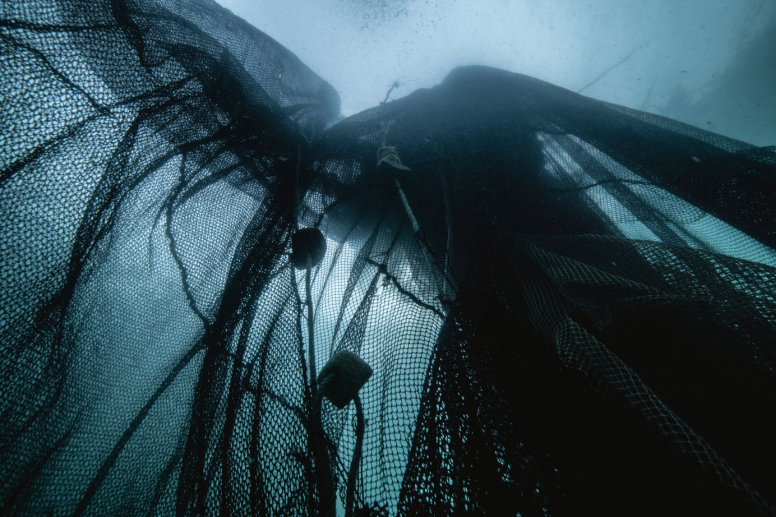
The problem of plastic pollution is all around us, but fishing nets are usually not the most visible when looking at the ocean. How did the idea come to you, and why fishing nets?
K: When we started out, we had several ideas in mind. We hadn't figured out exactly what we wanted to do, but the basic concept was: take plastic, collect it from the beaches, recycle it, make a product out of it, and sell it to create positive or shared business value. The sales of this product could then be used to strengthen collection and product development.
While we were thinking about it, we left Australia and went to Chile to work for a government project on sustainable development in different sectors. One of these sectors was fishing, so we were able to look at all the waste streams generated by the fishing sector in general. We identified a major problem in the nylon-based fishing nets that these companies were all generating, and we thought this might be a good opportunity to get involved.
One of the difficulties associated with collecting random plastic from beaches is that it's different every time and there are different components. This plastic has been in the environment for different periods of time, which means that it is very difficult to make it reproducible and make it into a high performance product, which is what we wanted to do. The opportunity with fishing nets is that they are generally made of few different materials and are fairly similar across continents. Nylon collected in North America will be almost identical to that collected in Asia or South America. This makes it a really clean and pure raw material. At the same time, we were talking with associations in our network, who identified fishing nets as one of the most harmful forms of plastic, especially for marine ecosystems. So everything came together for the project.
D: First and foremost, we wanted to go where we would have the most impact, so that was a key element. Fishing nets are a material that not many people are looking for now. A report a few years ago showed that 1.3 million new nets are made every year, and according to the latest estimates from the non-profit sector, up to 600,000 tons of them are likely to reach the marine environment every year. So there's a lot of material piling up, and there's new material every year, and we need to remind people that this is not a one-time cleanup, and when it's over, we'll have a beer and retire. It's a recurring problem that we're trying to establish a waste recovery model for.
So from this problem of thousands of tons of fishing nets, how does the process go to make, first, a skateboard, and then all the other products?
K: It all started in the field, in fishing ports in Chile, explaining our project, and asking for access to the old nets that were lying around. It was very small, with the three of us scraping, cleaning, sorting the nets, before taking them to the subcontracted recycler to transform them into granules. Once granulated, we could use them for injection molding. We wanted to make a fun and interesting product that would challenge us, and at that time, it was a small plastic skateboard.
While we were spending more time in the field with fishing companies, we realized pretty quickly that as a niche company, we could never reach a scale that could really impact the amount of waste generated. So with Patagonia's support, we changed our model from a product brand to a raw material supplier. The relationship with Patagonia allowed us to scale our operations to much larger volumes. We first launched on the cap visor, which went to market in 2020, but what we really saw was the opportunity to replace nylon, a material Patagonia uses a lot. We worked with the materials development team for several years, culminating in several product launches. The outdoor industry is a huge market, and the amount of nylon fabric and textile used is staggering, so it's always been a great opportunity to grow and increase our impact.
D: At the moment, we are continuing the training and collection of fishing nets from local communities in South America. This is our main activity. We get asked all the time, "When are you going to build your own fabric or spinning mill?" We don't think the world needs another fabric manufacturer. We think the world needs more solutions to keep waste from ending up in the ocean. That's what drives our mission: to bring this model to other coasts and ports that need to dispose of waste.
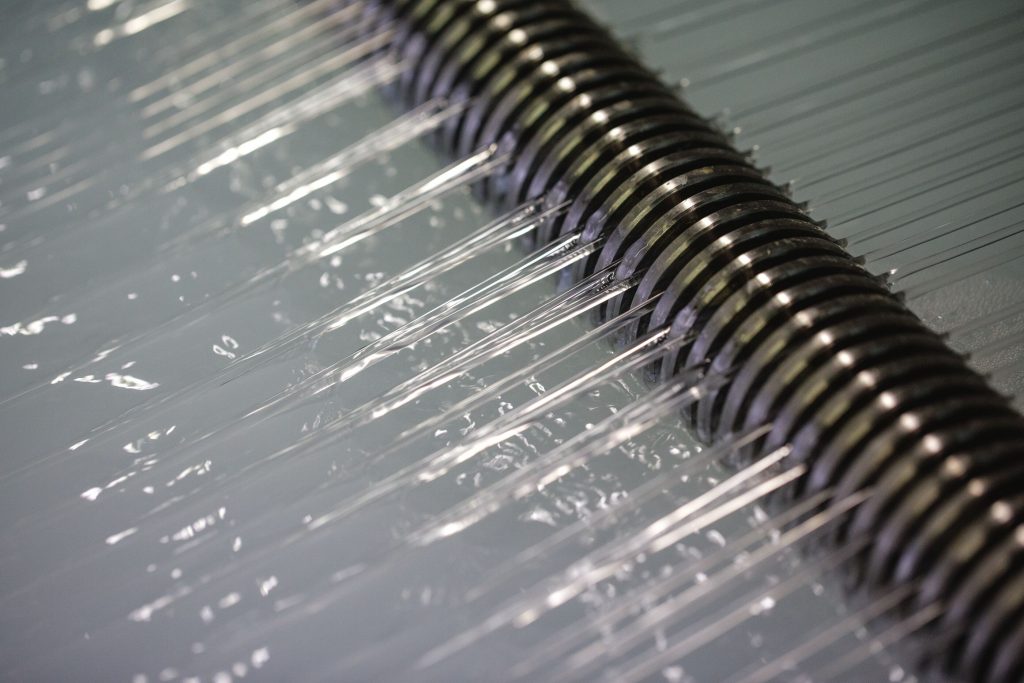
It sounds like you guys are doing a great job! You want to work with more and more brands, and be really transparent about your end-to-end process. How do you see the material evolving as more and more brands consider recycled rather than virgin raw materials?
D: A lot of people try to force a recycled source into products, but over the last few years, with Patagonia's guidance, we've looked at areas where nylon was absolutely necessary. For example, Futures Fins, our surfing partner that uses nylon, relies on its technical properties for a surfboard daggerboard, which makes sense from an engineering standpoint. With fishing nets for Patagonia, it's the high-performance technical fabrics that need to be durable. You have to withstand the elements, so we're looking at many opportunities in the outdoor space. They all depend on nylon because there aren't many substitutes, unlike single-use plastics, where more degradable alternatives can be found.
How did the relationship with Patagonia and Tin Shed Ventures guide you to become a member of B Corp and to be part of 1% For the Planet?
D: We didn't even know what B Corp or 1% For the Planet meant when we started in 2013. I remember getting an email from someone on the product team at Patagonia, who had seen something about skateboarding. The Tin Shed team then asked us to come in and talk about our business model, and shortly before the meeting ended, we talked about B Corp certification and 1PFTP. 1% is pretty straightforward. We already understood that we were eligible because we were making donations. At the time, we had a project with Save the Waves and another local association in Chile. So 1% was just a formality.
B Corp was a much more interesting process, because at the time we had very little revenue and were a very small company. It helped us a lot that Patagonia had this requirement, because we didn't know what it was, and we didn't know anything about certification. Taking the quiz and doing the exercises allows you to ask the right questions about your business. We implemented it on the fly, so we were able to take into account things like fair working conditions and decent wages from the start.
You said you've been donating since the beginning. What projects are you currently involved in, and are they only in South America or also in California or elsewhere in the world?
D: We always have partner organizations that we donate to here in the US. Last year it was Save the Waves, Sustainable Coastlines Hawaii. We also make smaller donations to organizations that spread the word and promote the activism we support, like the Surfrider Foundation.
For all the nets we collect, we commit to a donation per kilo, and then we work with the fishing companies and the community to link with an association, and it has been mostly one-off activities like composting and recycling education. This year we undertook a collective development project with a small fishing company in Peru. The company didn't know what kind of infrastructure they needed, and we helped them by doing a consulting study.
In the future, we want to direct more funding to associations and fishing companies that work for coastal protection and restoration. We are very interested in mangroves and coastal development projects that will also benefit the climate.
How often do you travel to South America, and what is the work like there?
K: In 2021, I spent a total of four months there, while Ben lives there full time with his wife. We hire locals in the communities we work with because it's the best opportunity for them to really get involved with the fishermen, and the fact that they come from the community is an obvious value-add. We have created community workshops with the fishing companies, and we make them aware of the impact of discarding nets in the environment. When they reach a significant amount of collected nets, they know they can call us and we will send a truck to collect them. We have teams of trained workers who collect these nets, cut them into smaller manageable pieces, and remove foreign debris. Then these nets go through an industrial washing process and then industrial decomposition. In short, the huge amount of useless waste that the nets represent is transformed into a usable raw material that is exported directly to the recycler.
D: There's no magic machine that can take the nets and identify anything that might be useful, so it's still a very manual, physical labor process. There is a team of 16 to 20 people who process two to three tons a day. We see what we have built in Chile as a good example of what could be done in Peru, Mexico and Ecuador. Those are the next areas where we plan to implement a more established model.
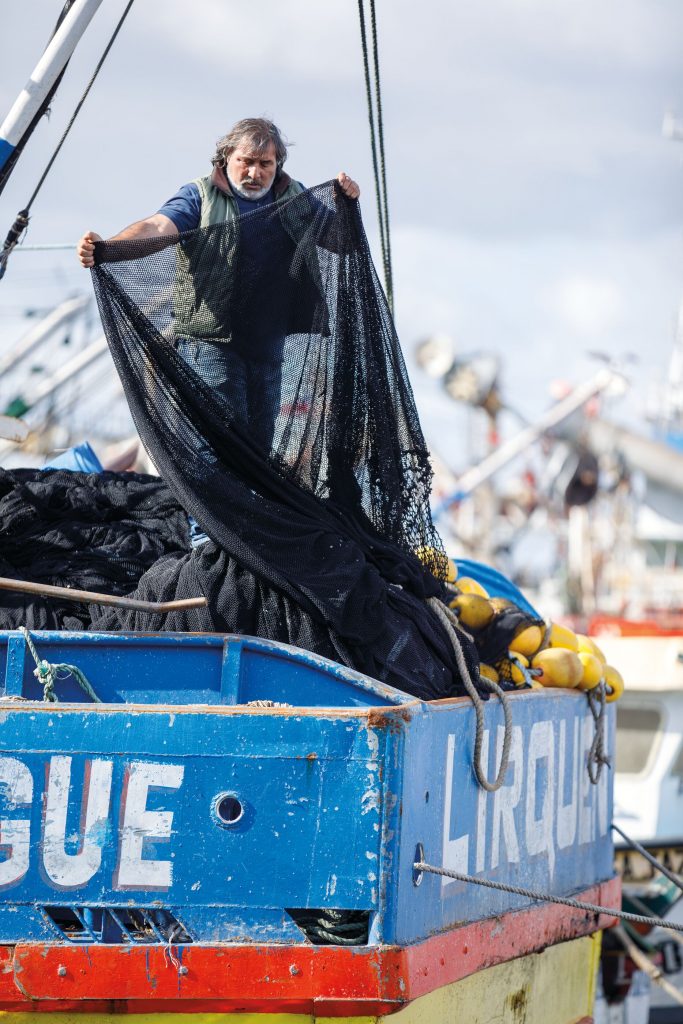
Where do you see Bureo developing, and what are your plans for the coming years?
K: For us, the next few years are about expansion. We've spent the last eight years finding our model and making it a reality, moving from research and development to where we are today. Last year we collected more than 700 tons of fishing nets for processing at our facility, which represents about 65 containers of 12-meter material exported, which is an important step for us. Marketing the product through Patagonia's supply chain has taken us to a new level, and we're looking to increase our impact and expand geographically. This mainly means moving to new communities like Peru. We started in South America, but we are also developing programs in Ecuador, Mexico and the United States. Our goal is to increase the amount from 700 tons per year to almost 2,000.
D: We've had enough indicators with the Patagonia product launch and other partners that what we're doing adds value to the environment and people want this material. There is also influence on the fishing industry, governments, and society in terms of the end use of the material. We are looking at the carbon footprint we will be able to capture and we think we will have a measurable impact on the amount of material or prevention. The longer-term legacy of this approach is that we could be part of the movement to influence the way plastics are used in general, including fishing nets, and create more sustainable designs.
Looks like you have a lot of work to do!
K: Yes, one of the questions we are often asked is "what are you going to do when you run out of fishnets", and we always laugh and say that we will celebrate, but unfortunately the reality is that this material is constantly used by the fishing industry because there is no viable alternative at the moment. Billions of people depend on fish as their primary source of protein, so the fishing industry will continue to fish. Plastic-based fishing nets are the most economical and sustainable solution. So as long as this waste continues to be produced, we will have to expand our operations to collect it.
D: I think one of the nicest things about partnering with Patagonia is looking at the responsibilities and having a partner willing to let us build them into our business model. Even for expansion, if we weren't careful, or if we left out labor or safety data and other protocols, we could recycle a lot more and a lot faster. But for us, it's more important to recruit locally, train and educate employees, and make it a sustainable process.
If this party finally happens, let us know!
K: Yes, absolutely! On a day-to-day basis, it's pretty rare that we take the time to look at what we've accomplished over the past few years. We're pretty proud of what we've done and the growth we've experienced so far. What excites us the most is the opportunity to continue to expand the program. But at the same time, we know that the problem with the environment is not going to be solved by simply recycling fishing nets. This is our little niche solution to a very specific problem, but we hope that by looking differently at our sources of waste, we can create shared value businesses, B-Corps, and other businesses that really help solve some of these problems. And if we inspire the next generation, or give someone else the idea to look at fishing nets or other sources of waste, that's a win for us.
D: As surfers, we have a different view of the ocean and these issues. We know the Surfers against Sewage team in the UK, and the work they do on water quality and plastic pollution. We mentioned Sustainable Coastlines in Hawaii, Surfrider Foundation and Save the Waves. There's a lot of activism in the surf community, which is very sensitive to all of these issues. We see a lot of people putting their passion and skills into this work. When someone is really passionate about the ocean, whether they're bodysurfing or surfing, they're going to want to protect it.
Find out more about Bureo here.
